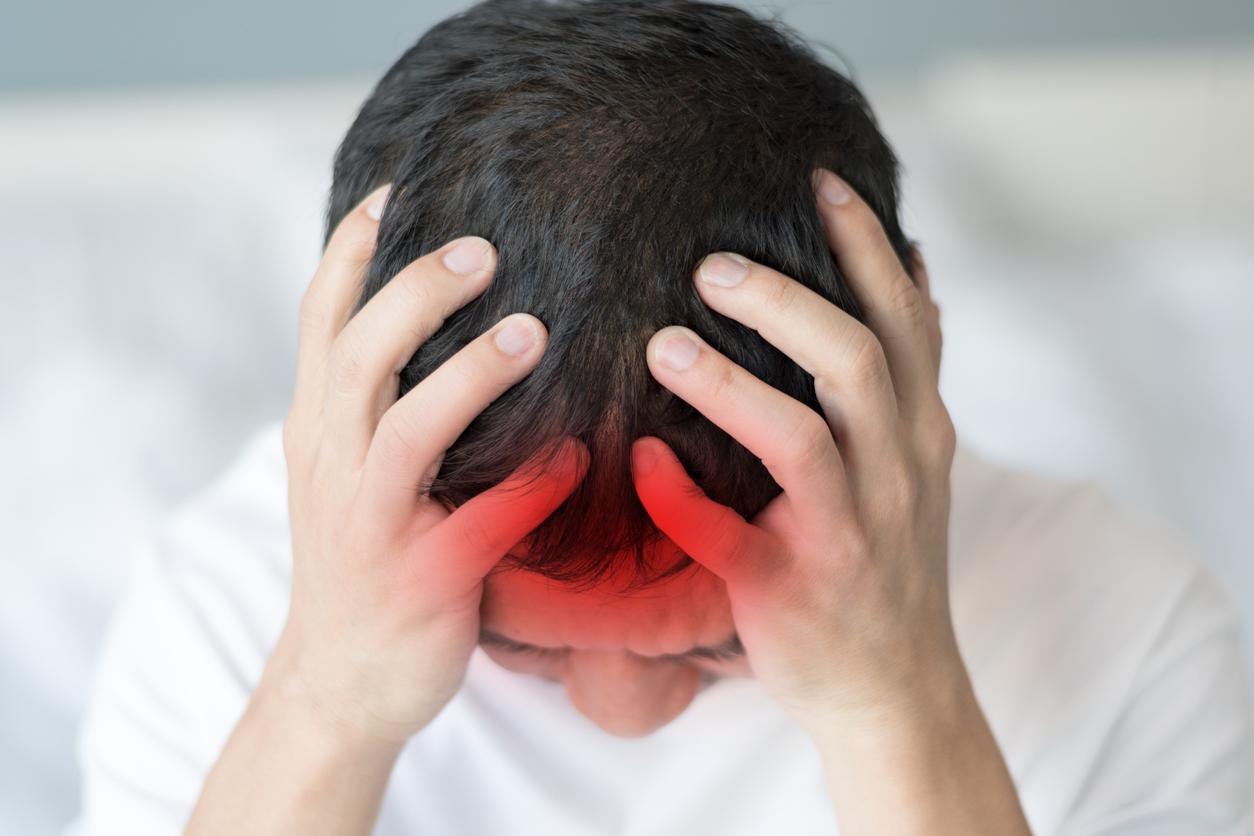Where does headache pain come from? Is it really the brain that hurts? A neuroscientist takes stock.

- Migraines affect 7 to 8 million people in France, including 12% of adults and 5% to 10% of children.
- 20% of women suffer from it. Chronicity is greater in women (4.18% of the population) than in men (1.62%).
- Migraine begins before the age of 40 in 90% of cases. It gradually decreases after 40 years. After menopause, the prevalence of migraine decreases sharply in women.
What to answer to your child when he asks you the explanation of his headache? Is it really the brain that is in pain or is the phenomenon more complex?
An Australian-Scottish neuroscientist, David Farmer, a researcher at the University of Melbourne, provides simple and accessible explanations in an article for the young audience version of The Conversation.
Headache: explanations of what pain is
When we talk about headache, we understand that the head makes us feel pain. Pain is the brain’s way of communicating to us a potential danger to our body. For example, when we burn our fingers, which can damage our skin, the nociceptors (pain sensory receptors) under the skin send nerve messages to our brain to inform it of the damage suffered. So we feel pain. “It’s our brain’s way of convincing us not to do things that can hurt us. We will accidentally burn ourselves once but not twice”summarizes David Farmer.
For the headache, things are a little more complicated, as the neuroscientist points out: “the brain itself is not able to sense damage like our fingers can”. For example, it is possible to prick or cut it without feeling any pain, as during brain surgery while the patient is awake.
It’s not the brain but everything around it that triggers pain
But then, if the brain cannot feel pain, why can we have headaches? “Because in our head, there is not only the brain, there are also muscles, tissues, veins, arteries and all these parts can feel certain things like irritation, inflammation or dehydration, and therefore pain”, explains David Farmer. As during a burn, nerve messages are sent to the brain which interprets them as pain inside our head and we feel a headache.
“These irritations, inflammations or dehydration can occur when we bump our heads, we get sick or when we expose ourselves to the sun for too long without drinking enough”, says the Australian-Scottish researcher. In the event of mild headaches, it is best to lie down in a calm, cool and dark place and if the pain does not pass, do not hesitate to consult your doctor, he recommends.















